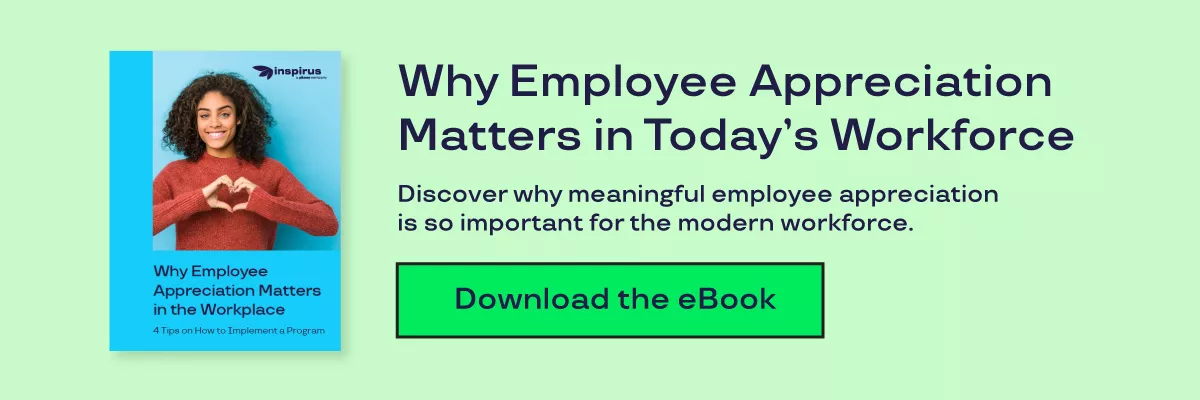
Ways to Craft Strong & Memorable Internal Communication Messages
April 29, 2024
There is one common factor across all successful, high-functioning organizations: effective communication.
Effective communication has always been an essential factor in team and organization success. However, with the recent surge in remote and hybrid work since the pandemic, the importance of effective internal communication has only been magnified. Clear, effective communication enables teams to be more productive, minimizes misunderstandings, and ultimately drives projects and innovation forward – regardless of employees’ locations.
Internal Communication Messages
Internal communication is essential for any successful organization, no matter the size or industry. It enables leaders to articulate their vision, values, and strategic objectives while empowering employees to understand the collective goals and their role in achieving them.
Beyond sharing important information, internal communication can help foster a sense of belonging, transparency, and trust within an organization. Every aspect of internal messages, from their tone to the delivery method to recipients’ reactions, plays a critical part in shaping organizational culture and establishing norms and expectations for communication methods.
There are several common characteristics shared by effective internal messages:
- Timeliness and relevance
- Conciseness and format
- Thoughtful tone and engaging content
Incorporating these three principles into your messages is key to maximizing their impact and effectiveness. By doing so, you can foster better collaboration among your peers and facilitate more open two-way communication throughout your team and organization.
Characteristics of Strong and Memorable Internal Communication Messages
Have you ever received a message from a colleague that stayed with you long after you read it? That’s the power of influential internal communication. The key to writing these impactful messages lies in crafting a message that is straightforward yet captivating.
But, what exactly characterizes a strong and memorable message? While the definition of “memorable” may vary from person to person, there are a few common factors:
- Message Clarity and Conciseness: Write your message to be straightforward and easy to read. As you prepare the message, consider how your audience will perceive it and whether or not it’s easy to follow.
- Message Relevance and Context: Memorable messages are timely for situations. Ensure the recipients can see the direct relevance of the information to their role and identify the key takeaways.
- Overall Engagement and Emotion: Use stories, narratives, or motivational appeals to better resonate with the recipients on a more personal level and to keep them engaged.
- Message Consistency and Frequency: Determine an appropriate frequency for messaging your recipients, ensuring it remains top of mind for employees.
An effective internal communication message that hits the mark will capture recipients’ attention. It should be clear, directly address relevant topics, evoke emotion (if it makes sense), and be timely. By following these principles, you can create messages that truly make an impact and achieve your objectives.
Strategies for Crafting Strong and Memorable Internal Communication Messages
Writing compelling internal communication messages entails a strategic blend of thoughtful planning, appropriate tone, engaging visuals, and storytelling.
Here are some internal communication best practices:
Message Planning and Structure
Writing a strong internal communication message starts with a well-thought-out structure to ensure it achieves the intended objective. Before writing your draft, define your objectives upfront to ensure the message will remain purposeful, straightforward, and relevant.
Use Headlines and a Compelling Opening
Once you have a draft ready, you need to think about the headline and opening. As we all know, attention spans are limited in today's digital world, so capturing audience interest from the start is paramount. One best practice is to state the most important information at the opening of the text to ensure recipients understand the key takeaway(s) from the get-go.
Additionally, consider how your message flows. Are there any areas where you can add a headline? If you are writing a long, in-depth message, consider how you can break up the text for easy skimming.
Check Your Message for Flow and Clarity
Just as a well-structured essay follows a logical progression of ideas, internal communication messages should flow seamlessly from one point to the next. If there is any text you want to call attention to, consider emphasizing it by bolding, underling, italicizing, or highlighting the text. Once you have finalized the draft, read through it one last time to ensure the message is cohesive and flows seamlessly.
Use of Language and Tone
Two elements that play a key role in determining how well a message is received: tone and language. Together, they can make the difference between your internal communication resonating or being overlooked.
Different Types of Tones
Understanding the nuances of the two tones – formal and informal – and knowing when to use them is essential for building rapport and crafting a context-appropriate message.
Here are differences between the two:
- Informal Tone: When addressing colleagues with whom you share a strong rapport, consider using an informal tone that conveys a sense of camaraderie and approachability. Embracing a relaxed tone is a great way to encourage open conversation.
- Formal Tone: A formal tone may be more appropriate in certain situations, such as speaking to a senior leader or client. Use this type of tone to convey respect and professionalism to your recipients.
Depending on the objective of your message and the end recipient(s), you can also consider injecting personality and authenticity into your communications to help foster trust and strengthen your connection. Of course, always consider how the recipient will perceive your message before sending it to ensure it is considerate of their preferences and appropriate for the situation.
Use Plain Language
Consider using plain language and avoiding jargon throughout your message for clarity and easy understanding. Internal communications should prioritize clarity over complexity, opting for simple, straightforward language that resonates with diverse audiences.
Visual Elements
Incorporating visual elements into internal communication messages can amplify their impact and appeal. After all, humans are inherently visual creatures. Incorporating visual elements such as images, graphics, and videos is a great way to capture attention and easily display complex information.
As you plan your message, consider the most appropriate multimedia format for the message and situation. In some instances, an image may make more sense; in others, a graph, chart, table, or video may be better suited.
Remember, if you decide to incorporate visual elements, make sure you follow your company’s brand and design guidelines to ensure they are consistent and reinforce the brand. It’s important that your visuals adhere to your brand’s guidelines.
Interactive and Multimedia Communication
One of the best ways to effectively communicate a message or gather feedback is through interactive and multimedia content.
Interactive Content
In your messages, leverage interactive platforms and tools to encourage participation, especially if you want your colleagues’ thoughts on the content. You can use interactive tools, such as polls, quizzes, and surveys, to encourage your audience to interact with the content, keeping them engaged and fostering a sense of ownership.
If you want feedback from your recipients, consider interactive formats that encourage two-way communication. Whether through meetings, online forums, or dedicated feedback channels, provide avenues for your team to voice their opinions and concerns. Give them clear instructions on how to best provide any feedback and if there is a preferred channel for it.
Multimedia Content
Similar to visual appeals, multimedia is a great method for displaying complex information in an easily digestible format. Here’s how you can utilize these three standard multimedia formats in your internal communication:
- Videos: Videos are a powerful tool as they combine visuals, audio, and motion to convey information in a compelling and engaging way. If you incorporate a video, consider keeping it less than 2-3 minutes long, given people’s short attention spans.
- Infographics: Infographics are a great way to visually present complex data in a clear and concise manner. They are ideal for summarizing reports, presenting statistics and findings, or explaining complex processes or concepts.
- Animations: Animations are a dynamic visual element that uses movement and storytelling to convey messages in an engaging and memorable way. They are great for illustrating processes, explaining concepts, or telling stories.
By incorporating these multimedia formats, you can enhance the visual appeal and effectiveness of your message. In fact, multimedia content, such as the ones listed above, will leave a lasting impression far longer than plain text.
Storytelling Techniques
Storytelling is a powerful tool you can use to make your message memorable and better resonate. By framing your internal communication with compelling narratives, you can capture your audiences’ attention, evoke empathy, and/or inspire action.
For instance, highlighting a story or testimonial is a great way to influence recipients and encourage participation. Personal anecdotes and firsthand accounts provide tangible examples of the impact of organizational initiatives.
Crafting compelling story arcs ensures messages have a lasting impact on audiences. From the introduction of a problem or challenge to the resolution and lessons learned, storytelling techniques create a narrative structure that engages audiences and imparts key messages in a memorable and impactful manner.
If you struggle with crafting a persuasive message, try starting with the end in mind. Work your way back from the ending to craft a more cohesive narrative that’s easy to follow.
Releasing the Internal Communications
The timing of internal communications can have a significant impact on its effectiveness. Whether announcing policy changes, sharing important updates, or soliciting feedback, timing messages to coincide with periods of high engagement and receptivity can maximize their impact and ensure they receive the attention they deserve.
Be aware, though, that information overload is a common challenge many organizations and employees face with internal communication. Modern technology has made it extremely easy to access and communicate with colleagues. The one downside to this is that employees may have too much information competing for their attention. You can combat this by streamlining internal communication processes and providing relevant, actionable information upfront.
Another challenge global organizations often face is communicating beyond language barriers and cultural differences. If you or your team are experiencing this, consider implementing solutions that provide automatic translations for messages and be cognizant of word choice. Use plain language that’s easy to understand in place of slang terms and technical jargon.
Lastly, a final common challenge you may face is employee resistance to change. Humans tend to gravitate to situations that feel familiar and comfortable, thus making change intimidating and unwanted. A great way to address this is by leading with empathy, transparency, and effective communication. Consider breaking down the phases of the change to help employees mentally prepare and alleviate the stress that often comes with change.
Conclusion
Crafting strong and memorable internal communication messages requires a blend of cohesive structure and flow, compelling narratives and objectives, and an empathetic understanding of the audience. By embracing these effective internal communication tactics, you and your team can cultivate a thriving workplace that prioritizes transparency and open dialogue, strengthening employees’ connectivity, collaboration, and collective purpose.





